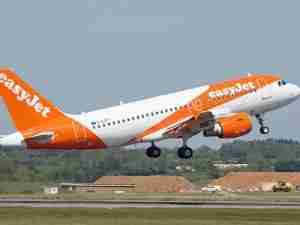Seven Years in Waiting, Qantas Investors Want Dividend Map
By: | Aug 23 2016 at 04:36 AM | Air Cargo
Qantas Airways Ltd. shareholders have cheered Chief Executive Officer Alan Joyce’s efforts to turn around the marquee Australian carrier, helping the stock more than triple in under three years. Now they want to see a roadmap for reinstating dividends.
Australia’s biggest airline, which has withheld dividends for seven years, is expected to announce Wednesday record annual profit because of lower fuel expenses and gains from Joyce’s restructuring.
Singapore Airlines Ltd. and Cathay Pacific Airways Ltd. have already restarted paying dividends after the global financial crisis. Sydney-based Qantas has made two one-off capital returns totaling more than A$1 billion ($759 million) in the past year, while not reinstating the dividend.
“That’s what everyone’s been waiting for,” said Karen Jorritsma, Citigroup Inc.’s Sydney-based director of equities sales for Australia and New Zealand. “They’ve got the ability to do it, so I think it would be taken extremely well.”
Qantas stock on Tuesday fell 0.9 percent to A$3.40 in Sydney, giving the airline a market value of A$7 billion. The shares have dropped 17 percent this year.
Joyce, 50, said this month at a conference in Brisbane that the board would again be looking at ways to return cash in August. Joyce, who took the helm in 2008, has purchased fuel-efficient Boeing Co. Dreamliners and retired old aircraft after the carrier posted a loss amid a fare-war with its biggest local competitor Virgin Australia Holdings Ltd. The Irishman also imposed a wage freeze and eliminated as many as 5,000 jobs.
Regular dividend payments may be reinstated at the end of the year ending June 2017, according to First NZ Capital Securities. The brokerage also expects Joyce to announce another one-off return on Wednesday—a A$500 million stock buyback.
A spokesman for Qantas declined to comment on any dividend policy before the company releases its results.
The turnaround helped Qantas build A$2.3 billion in cash and equivalents on its balance sheet at the end of last year. Analysts expect Qantas to report Wednesday net income of A$1.13 billion for the year ended June 30, based on the average of six estimates compiled by Bloomberg. Revenue is forecast to be A$16.3 billion.
Strong Message
Joyce’s three-year turnaround plan announced in 2014 was to find A$2 billion in cost savings. His program has already wrung out benefits of A$1.36 billion.
With interest rates at record lows from the U.S. to Japan, money managers are on a hunt for income-generating assets. Some funds are even obligated to buy such securities, so restarting dividends could open up Qantas stock to a wider group of investors, according to Forager Funds Management Pty.
“In the world we live in, where a lot of investors are interested in yield, that would be pretty important,” said Daniel Mueller, a Sydney-based analyst at Forager. “It sends a very strong message that the worst is behind us.”
Companies in Australia’s benchmark S&P/ASX 200 index deliver an average dividend yield of 4.5 percent.
Domestic tax perks for Australian shareholders are key to determining when regular payments could restart.
Tax Efficient
Local investors can receive additional tax benefits, known as franking credits, on top of dividend payments. As Qantas pays tax on its growing profits, it accumulates more of these credits. Those credits, in turn, make normal dividend payments more tax efficient for local shareholders compared with stock buybacks or special capital returns.
Qantas has held out fig leaves to investors before. In November 2012, Chairman Leigh Clifford said dividends would resume at the “earliest opportunity.” He didn’t give a timetable for the resumption at that time.
“Shareholders will be expecting it,” said Richard McDonald, a former Qantas pilot who’s chairman of the Australian Shareholders’ Association in the state of New South Wales. The association represents many retirees. “A lot of people have been a bit disappointed with the previous few years.’’










